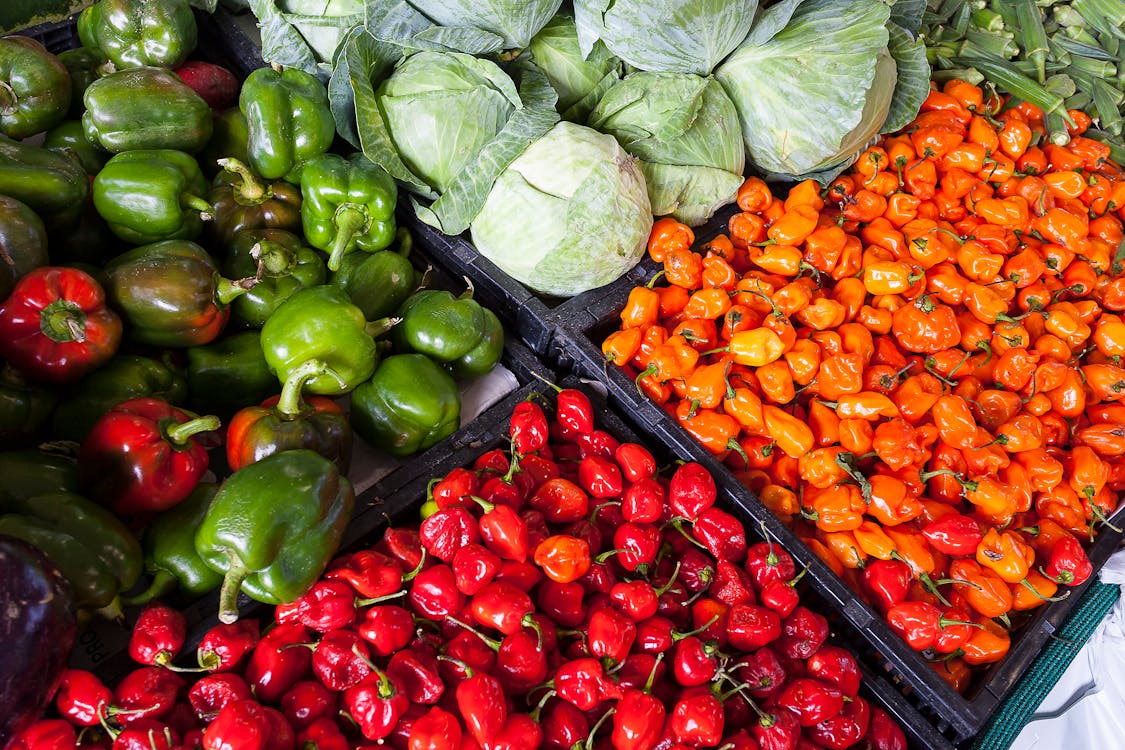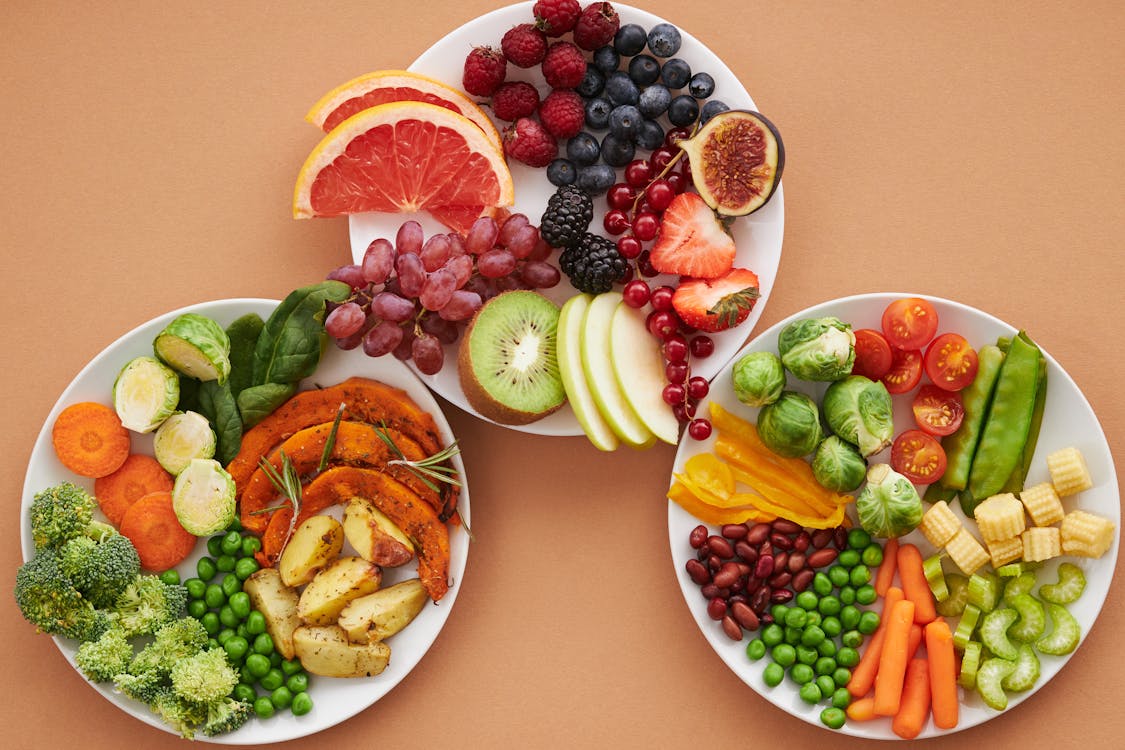Table of Contents
- Why Bother? The Amazing Perks of Healthy Eating on a Budget
- Master the Art of Meal Planning & Prep: Your Foundation for Success
- Savvy Shopping Strategies to Slash Your Grocery Bill
- Budget-Friendly Food Heroes: What to Buy
- Cooking Smart: Making the Most of Your Ingredients
- Getting the Kids Involved: Raising Budget-Savvy Eaters
- Overcoming Common Hurdles
- Your Journey to Affordable Healthy Eating Starts Now
Eat Healthy, Spend Less: Your Ultimate Guide to Family Budget Meals
Let’s be honest, juggling family life often feels like a high-wire act. Between work, school runs, homework, and trying to squeeze in quality time, adding “cook nutritious, affordable meals every single day” can feel like an impossible demand. You want the best for your family’s health, feeding them vibrant fruits, veggies, lean proteins, and whole grains. But then reality hits – the ever-increasing grocery bill. It often seems like healthy eating and staying on budget are mutually exclusive goals. Does feeding your family well *really* have to break the bank?
We’re here to tell you loud and clear: NO! It’s absolutely possible to nourish your family with delicious, healthy food without emptying your wallet. It takes a bit of planning, some savvy strategies, and a willingness to embrace a slightly different approach to food, but the payoff – healthier kids, more energy for everyone, and less financial stress – is enormous. This guide is packed with practical, actionable tips to help your family master healthy eating on a budget. Forget the guilt and the overwhelm; let’s get cooking!
Why Bother? The Amazing Perks of Healthy Eating on a Budget
Before we dive into the “how,” let’s quickly touch on the “why.” Beyond the obvious benefit of saving money (which is huge!), consciously choosing affordable, nutritious foods has ripple effects:
- Better Health Outcomes: Nutritious food fuels growing bodies and minds. It boosts immunity, improves concentration, provides sustained energy (goodbye, sugar crashes!), and lays the foundation for long-term health, potentially reducing healthcare costs down the line.
- Teaching Valuable Life Skills: Involving your kids in meal planning, shopping, and cooking teaches them about nutrition, budgeting, resourcefulness, and the importance of food. These are skills they’ll carry into adulthood.
- More Energy for Fun: When your family is fueled by wholesome foods, you’ll likely notice increased energy levels – more stamina for bike rides, park visits, and family adventures.
- Reduced Food Waste: Budget-conscious eating often goes hand-in-hand with minimizing waste. Using ingredients fully means less money thrown in the bin and a lighter environmental footprint.
- Debunking the Myth: You actively prove that healthy food doesn’t have to be gourmet, complicated, or expensive. Simple, whole foods are often the most nutritious and affordable.
Embracing budget-friendly healthy eating isn’t about deprivation; it’s about making smart, intentional choices that benefit your family’s health and your finances.

Master the Art of Meal Planning & Prep: Your Foundation for Success
If there’s one secret weapon in the fight for affordable healthy meals, it’s meal planning. Flying by the seat of your pants at 5 PM usually leads to expensive takeout or less-than-ideal convenience foods. A little forethought goes a *long* way.
The Power of the Plan: Why Meal Planning is Non-Negotiable
Meal planning isn’t about rigid schedules; it’s about creating a roadmap for your week’s meals. It helps you:
- Buy Only What You Need: Prevents impulse buys and ensures ingredients get used.
- Utilize Sales & Seasonal Produce: Plan meals around what’s affordable that week.
- Reduce Decision Fatigue: No more daily “What’s for dinner?” stress.
- Ensure Balanced Meals: Consciously incorporate variety and nutrients throughout the week.
- Save Time: Streamlines grocery shopping and cooking processes.
Creating Your Weekly Menu: Keep it Simple & Flexible
Don’t overcomplicate it! Here’s a simple process:
- Check Your Calendar: Note nights with activities, late meetings, or social events where quick meals or leftovers are needed.
- Shop Your Pantry First: What ingredients do you already have? Check your fridge, freezer, and cupboards. Plan meals around using these up first.
- Consult the Sales Flyers: See what proteins, produce, or pantry staples are on sale this week. Let deals guide your choices.
- Involve the Family: Ask for requests (within reason!). Getting buy-in makes mealtime smoother. Maybe assign each family member a night to choose the meal (from a healthy list!).
- Theme Nights (Optional but Fun!): Meatless Monday, Taco Tuesday, Soup Saturday – themes can simplify planning and add variety.
- Start Small: Plan just 3-4 dinners if a full week feels overwhelming. Factor in leftover nights!
- Keep a Master List: Jot down family-favourite budget-friendly meals for easy reference when you’re stuck.
Smart Shopping Lists: Your Grocery Store GPS
Once your meal plan is set, create a detailed shopping list. This is crucial for sticking to your grocery budget.
- Organize by Store Section: Group items by produce, dairy, pantry, etc., to avoid backtracking and impulse buys.
- Be Specific: Instead of “vegetables,” write “3 bell peppers, 1 bag spinach, 2 lbs carrots.”
- Check Your Pantry AGAIN: Seriously, double-check you don’t already have that spice or can of beans.
- Stick to the List!: This is the golden rule. Allow maybe one pre-planned ‘treat’ if it fits the budget, but otherwise, resist temptation.
Batch Cooking & Meal Prep: Invest Time Now, Save Time Later
Meal prep doesn’t have to mean rows of identical containers (unless you like that!). It’s about doing *some* prep ahead to make weeknight cooking faster.
- Wash & Chop Veggies: Store chopped onions, peppers, carrots, etc., in airtight containers for quick additions to meals.
- Cook Grains Ahead: Make a big batch of brown rice, quinoa, or oats to use throughout the week.
- Prepare Proteins: Cook chicken breasts, hard-boil eggs, or brown ground meat.
- Make Components: Whip up a big batch of salad dressing, pasta sauce, or soup base.
- Assemble Lunches: Pack salads (dressing separate), grain bowls, or wraps for grab-and-go ease.
- Batch Cook Full Meals: Double recipes like chili, soup, or casseroles. Eat one now, freeze one for later.
Even dedicating just an hour or two on the weekend can dramatically reduce weeknight stress and reliance on costly convenience options.

Savvy Shopping Strategies to Slash Your Grocery Bill
Okay, you have your plan and list. Now it’s time to hit the store (or website). Smart shopping is key to maximizing your family nutrition budget.
Know Your Stores & Sales Cycles
Different stores have different strengths. One might have better produce prices, while another excels in bulk goods or meat sales. Pay attention to weekly flyers (digital or paper) and learn the typical sales cycles for items your family uses often. Stocking up (within reason) when staples are deeply discounted saves money long-term.
Embrace Store Brands & Generic Options
Don’t shy away from store brands! Often, they are manufactured by the same companies as name brands but cost significantly less. For pantry staples like canned goods, pasta, oats, flour, sugar, and even some dairy products, the quality difference is usually negligible, but the savings add up fast. Give them a try – you might be surprised.
Buy in Bulk (Wisely!)
Buying larger quantities of non-perishable items or freezable goods can offer substantial savings. Think rice, oats, beans, lentils, pasta, spices, nuts, seeds, and frozen vegetables or fruits. Even meat can be cheaper per pound in family packs – portion it out and freeze immediately. However, only buy bulk if:
- You have adequate storage space (pantry, freezer).
- You will genuinely use the item before it expires or spoils.
- The unit price is actually lower (check this!).
Wasted bulk items are not a bargain.
Don’t Shop Hungry (The Cardinal Sin!)
We’ve all done it. You go to the grocery store famished, and suddenly *everything* looks appealing – especially processed snacks and convenience foods. Shopping on an empty stomach leads to impulse buys that wreck your budget and often aren’t the healthiest choices. Have a snack before you go!
Unit Pricing: Your Best Friend in the Aisles
Learn to read the shelf tags! Most stores display the unit price (e.g., price per ounce, per pound, per 100 grams). This allows you to compare the true cost of different package sizes or brands accurately. The biggest box isn’t always the cheapest per unit, especially if a smaller size is on sale. This is crucial for making informed grocery savings tips work.
Consider Loyalty Programs & Coupons (Digital & Paper)
Sign up for store loyalty programs to access exclusive discounts and rewards. Check store apps and websites for digital coupons you can clip virtually. While extreme couponing isn’t necessary, strategically using coupons for items you already planned to buy can shave off extra dollars. Just be careful not to buy something *only* because you have a coupon.
Exploring Farmers Markets & CSAs
Depending on your location and the season, farmers’ markets can offer incredibly fresh, local produce, sometimes at competitive prices, especially towards the end of the market day. Community Supported Agriculture (CSA) programs, where you buy a ‘share’ of a local farm’s harvest, can also be cost-effective, providing a regular supply of seasonal produce, though the upfront cost might be higher.

Budget-Friendly Food Heroes: What to Buy
Knowing *what* foods offer the most nutritional bang for your buck is essential for cheap healthy meals. Focus on whole, minimally processed ingredients.
Protein Powerhouses on a Dime
Protein is essential, but it can be pricey. Focus on these affordable options:
- Eggs: Incredibly versatile, nutritious, and usually very affordable. Breakfast, lunch, or dinner!
- Legumes (Beans, Lentils, Chickpeas): Dried beans and lentils are exceptionally cheap, packed with protein and fiber. Canned versions are convenient, just rinse well to reduce sodium. Use them in soups, stews, salads, or to replace some meat in dishes.
- Tofu & Edamame: Plant-based protein sources that readily take on flavors. Often cheaper than meat.
- Canned Fish: Tuna, salmon (look for sales!), and sardines are great sources of omega-3s and protein. Use in salads, sandwiches, or pasta dishes.
- Cheaper Meat Cuts: Chicken thighs/legs are often cheaper and more flavorful than breasts. Tougher cuts of beef or pork (like chuck roast, pork shoulder) become tender and delicious when slow-cooked or pressure-cooked. Ground turkey or chicken can be cheaper than ground beef.
- Greek Yogurt: Often high in protein, especially plain versions (add your own fruit/sweetener). Buy larger tubs for better value.
Versatile Veggies & Fruits: Fresh, Frozen, and Canned
Aim for a rainbow of colors!
- Buy Seasonal: Produce that’s in season is typically more abundant, tastes better, and costs less.
- Don’t Dismiss Frozen: Frozen fruits and vegetables are picked at peak ripeness and flash-frozen, locking in nutrients. They are often cheaper than fresh, available year-round, and great for smoothies, stir-fries, soups, and side dishes. No worries about spoilage!
- Canned Options: Canned vegetables (like corn, peas, tomatoes) and fruits (packed in juice or water, not syrup) are shelf-stable and budget-friendly backups. Rinse canned veggies to lower sodium.
- Staples: Root vegetables (potatoes, sweet potatoes, carrots, onions) and cabbage are usually inexpensive, last long, and are very versatile. Bananas and apples are often affordable fruit options.
Whole Grain Wonders
Whole grains provide fiber, energy, and essential nutrients.
- Oats: Rolled oats (not instant packets) are incredibly cheap and perfect for breakfast, baking, or adding bulk to meatloaf.
- Brown Rice: More fiber and nutrients than white rice; buy in larger bags for savings.
- Whole Wheat Pasta: Often similarly priced to white pasta, offering more fiber.
- Popcorn Kernels: A super cheap and healthy whole-grain snack when air-popped or made on the stovetop with minimal oil.
- Barley, Bulgur, Quinoa: Explore different grains; they can often be found affordably, especially in bulk sections.
Dairy & Alternatives: Smart Choices
- Milk: Compare prices per gallon/liter.
- Yogurt: Larger tubs of plain yogurt are usually much cheaper than individual flavored cups. Add your own fruit, honey, or maple syrup.
- Cheese: Buy blocks instead of pre-shredded (it’s cheaper and melts better) and shred it yourself.
- Plant-Based Milks: Prices vary; look for sales or store brands. Sometimes making your own (like oat milk) can be cheaper.

Cooking Smart: Making the Most of Your Ingredients
You’ve planned and shopped – now it’s time to cook! Smart cooking techniques maximize flavor, minimize waste, and stretch your budget further.
Cook from Scratch (More Often Than Not)
Convenience comes at a cost. Pre-made sauces, packaged meals, and processed snacks are almost always more expensive (and often less healthy) than homemade versions. Cooking from scratch gives you control over ingredients (less salt, sugar, unhealthy fats) and saves significant money. Start with simple recipes and gradually build your repertoire.
Embrace Leftovers: Cook Once, Eat Twice (or Thrice!)
Leftovers are a budget-eater’s best friend! Don’t let them languish in the fridge.
- Plan for Leftovers: Intentionally make larger batches of meals like soups, stews, casseroles, or roasted chicken.
- Reinvent Them: Leftover roasted vegetables can go into a frittata or salad. Leftover chili can top baked potatoes or nachos. Shredded chicken can become tacos, sandwiches, or pasta salad.
- Designated Leftover Night: Make it easy – one night a week is ‘fridge clean-out’ night.
- Pack for Lunch: The easiest way to save money on lunches is to bring leftovers from dinner.
Stretch Your Meals: Make Meat Go Further
Meat is often the most expensive part of a meal. Make it stretch!
- Add Beans or Lentils: Mix lentils or mashed beans into ground meat for tacos, bolognese, or meatloaf. You’ll boost fiber and cut costs.
- Bulk Up with Veggies: Add extra chopped carrots, celery, zucchini, or mushrooms to pasta sauces, stir-fries, and casseroles.
- Go Meatless Occasionally: Plan one or two meatless meals per week using beans, lentils, tofu, or eggs as the protein source.
- Focus on Flavor: Use meat more as a flavoring component rather than the absolute star in some dishes (e.g., a flavorful stir-fry with lots of veggies and a smaller amount of chicken).
Reduce Food Waste: Use It Up!
Throwing away food is like throwing away money. Be mindful of waste:
- Proper Storage: Learn how to store produce correctly to extend its life (e.g., keep herbs in water, store potatoes in a cool dark place).
- Use Scraps: Save vegetable scraps (onion peels, carrot ends, celery tops) in the freezer to make homemade broth. Use stale bread for croutons or breadcrumbs.
- ‘Eat Me First’ Box: Keep a container in the fridge for items that need to be used up soon.
- Freeze Extras: Freeze leftover broth, tomato paste (in ice cube trays), sauces, or extra portions of meals. Freeze ripe bananas for smoothies.
Simple Seasoning, Big Flavor
You don’t need expensive pre-made sauces and marinades. Build flavor with:
- Dried Herbs & Spices: Buy in larger containers or bulk for better value. Experiment!
- Garlic & Onions: Flavor bases for countless dishes.
- Vinegar & Citrus: Brighten flavors with acidity.
- Broth/Stock: Use low-sodium broth (or homemade!) for depth.
- Salt & Pepper: Essential basics.
Getting the Kids Involved: Raising Budget-Savvy Eaters
Transforming your family’s eating habits is a team effort! Involving kids makes them more invested and willing to try new things.
Little Chefs in the Kitchen
Assign age-appropriate tasks: Younger kids can wash produce, stir ingredients, or set the table. Older kids can help chop vegetables, measure ingredients, or follow simple recipes. Cooking together creates positive associations with food.
Grocery Store Adventures
Turn shopping into a learning opportunity. Let kids help find items on the list, compare prices (teach them about unit pricing!), or pick out one new fruit or vegetable to try each week.
Gardening Fun (Even Small Pots Count!)
Growing even a small amount of food (herbs on a windowsill, a tomato plant on the patio) connects kids to where food comes from and makes them more excited to eat what they’ve grown. It’s a great lesson in patience and nature.
Taste Tests & Trying New Things
Introduce new foods alongside familiar favorites. Encourage tasting without pressure. Sometimes it takes multiple exposures for a child to accept a new food. Make trying new things a fun ‘adventure’.
Overcoming Common Hurdles
Making changes isn’t always easy. Let’s address some common roadblocks:
“I Don’t Have Time!”
This is where meal planning and prep shine. Even 10-15 minutes of planning saves hours later. Focus on simple recipes with fewer ingredients. Utilize slow cookers or pressure cookers. Embrace batch cooking. Remember, takeout also takes time (ordering, waiting/driving).
“My Kids are Picky Eaters!”
This is a tough one! Consistency and patience are key. Continue offering healthy options without pressure. Involve them in cooking. Try ‘hiding’ veggies (pureed into sauces, shredded into muffins). Offer choices: “Would you like carrots or broccoli tonight?” Model healthy eating yourself.
“Healthy Food is Boring!”
Challenge this! Explore different cuisines. Use herbs, spices, and healthy fats (like avocado or olive oil) to add flavour and satisfaction. Vary cooking methods – roasting vegetables brings out sweetness, stir-frying keeps them crisp. Presentation matters too!
Your Journey to Affordable Healthy Eating Starts Now
Whew! That was a lot, but hopefully, you’re feeling inspired, not intimidated. Eating healthy on a budget *is* achievable for your family. It’s not about perfection; it’s about progress. Start small. Pick one or two strategies from this guide to implement this week – maybe commit to meal planning dinners, or focus on buying more beans and lentils.
Remember the core principles: Plan your meals, shop smart, cook from scratch whenever possible, minimize waste, and get the family involved. Each small change you make adds up to significant savings and powerful health benefits for everyone you love.
It’s a journey, not a destination. There will be busy weeks and budget hiccups. Be kind to yourself, celebrate the successes, and keep learning. You’ve got this! Here’s to happier, healthier, and more affordable family meals.










